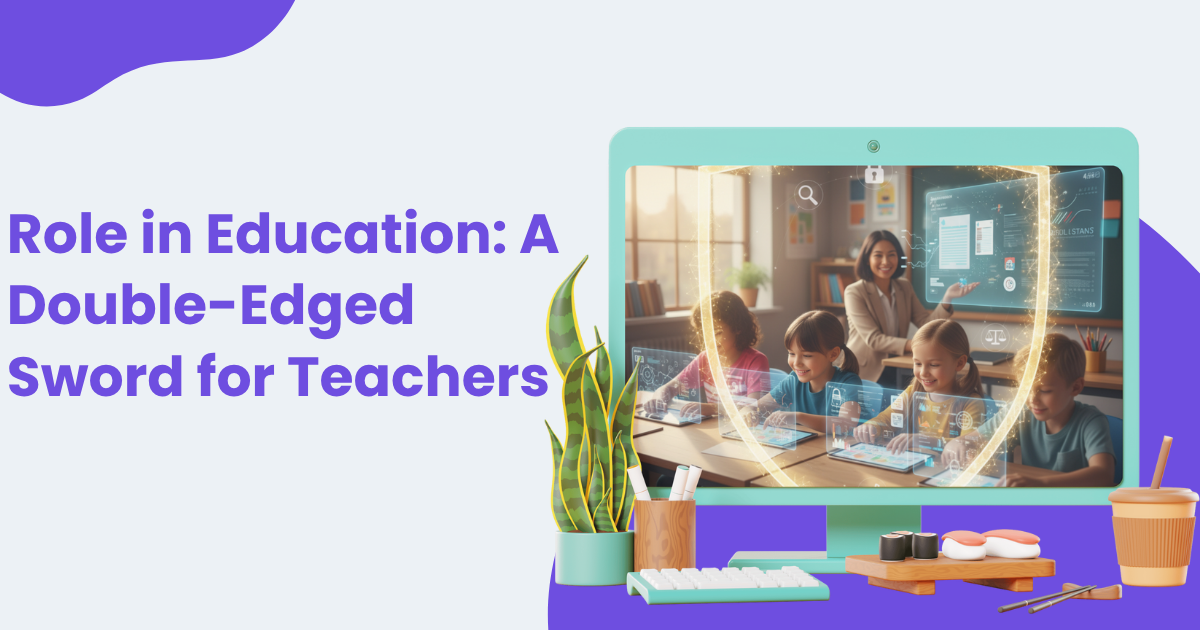AI Offers a Solution to Teacher Burnout, But Schools Need Guardrails.
A new report from the education watchdog, Estyn, reveals that AI can significantly reduce teacher workload, helping with tasks like lesson planning and drafting communications. However, the report also emphasizes that schools need clear guidance to use this technology “safely and ethically.” While some teachers are concerned about AI’s potential to harm student skills and facilitate plagiarism, the Welsh government has pledged to balance effective AI use with the safety and well-being of its students and staff.
At Birchgrove Comprehensive School in Swansea, AI literacy is a core part of the curriculum.
Staff and students are encouraged to use artificial intelligence as a tool to accelerate learning and promote curiosity in subjects like Information and Communication Technology (ICT).Ryan Cresswell, the school’s digital and innovation lead, emphasizes a proactive approach. “If we see a pupil using it, we encourage them to use it but we encourage them to use it responsibly and that really does have a positive impact,” he said.While there are valid concerns—such as students using AI as a “crutch as opposed to a learning tool” or a rise in plagiarism—the school’s approach is founded on trust. “The simple answer to that is we know our pupils, we know the work that they’re capable of because we see them day in and day out,” Cresswell added. By teaching students to navigate AI technology responsibly, the school aims to harness its potential rather than ignore it.This approach aligns with a growing movement in education technology that focuses on integrating AI to enhance learning outcomes and prepare students for a future where AI skills are essential.
AI in the Classroom: Students and Teachers Explore Its Potential
A
report by the education watchdog Estyn shows that secondary school students are using AI for revision, summarizing notes, and creating personalized quizzes. However, the study also found that there are significant differences in how much AI is used among students. Some students are hesitant, concerned about what’s allowed and worried that teachers will accuse them of cheating if they use the technology.Students at Birchgrove Comprehensive School are already using AI for revision. Thirteen-year-old Grace said, “when you use it in the correct way it can help you.” Other students, like Maya and Emilia, use AI to answer questions they have out of curiosity or to break down complex topics from class. Emilia noted the importance of verifying information, saying, “I double check it on lots of other websites to make sure it’s definitely the right answer.”Cautious Adoption and Widespread InterestOverall, the Estyn report found that most schools are in the early stages of using AI, with some staff leading small-scale experiments. However, the adoption of AI is often inconsistent, varying between individuals, year groups, and departments. Many educators are excited about AI’s potential but are also wary of its use due to concerns about accuracy, bias, and safeguarding risks.Despite these concerns, the report highlights that using AI to draft letters and reports has “substantially reduced administrative workloads,” allowing teachers to focus more on their students. Teachers also believe AI can be effective for tailoring resources to individual student needs, particularly for those who need additional support.
What is AI?
Artificial Intelligence (AI) is a technology that can perform tasks that typically require human intelligence. It learns from vast amounts of data, such as online text and images, to recognize patterns and make decisions. What is Generative AI?Generative AI (GenAI) is a powerful type of AI that goes a step further. Instead of just analyzing data, it can use what it has learned to create new content on its own. This new content—whether it’s text, images, videos, or music—can seem like it was made by a human.
AI’s Growing Role in Education: Key Applications for Teachers
Teachers are leveraging artificial intelligence (AI) in various ways to streamline their workflow and enhance student learning. The primary goal is to save time on administrative tasks so they can focus more on students.Here are some of the key applications for teachers:Saving Time and Cutting Workload: AI tools are helping teachers with mundane but necessary tasks like lesson planning, drafting reports, and writing communications to parents. By automating these processes, teachers can free up valuable time.Tailoring Learning: AI is proving to be a powerful tool for differentiated instruction. It can:Simplify texts to make materials more accessible for students, particularly those with special needs.Generate tasks or texts that are customized to fit the learning levels of all students in a classroom.Administrative Assistance: Beyond the classroom, AI is used to summarize meeting notes, reports, and planning documents, making it easier for teachers and staff to quickly digest key information.By integrating these AI-powered solutions, educators can create more personalized learning environments while tackling the ever-present challenge of managing their extensive workloads.
School Headteacher Embraces AI to Help Students Process Information and Accelerate Learning
Andrew Owen, the headteacher of Birchgrove Comprehensive School, admits he was initially wary of artificial intelligence (AI), feeling apprehensive because he lacked the skills to fully understand it. However, he now views AI in education as a powerful tool, particularly for students who struggle to process large amounts of information. He believes AI tools can be a “real asset to their learning” by helping students summarize articles and sift through information to find what’s truly important.
Navigating Risks and the Need for Guidance
Mr. Owen’s school has decided to fully embrace AI, using it for both administrative tasks and classroom instruction. He acknowledges that AI poses many risks if misused. From an educational perspective, he believes it’s the school’s duty to educate students on the acceptable use of AI and to teach them how to use it responsibly.The Welsh government agrees, stating that it’s “essential to balance the effective use of gen AI” with the safety and well-being of students and staff. In response to recommendations from the education watchdog Estyn, the government has committed to providing more training for school staff and developing national guidance on implementing AI in education.






